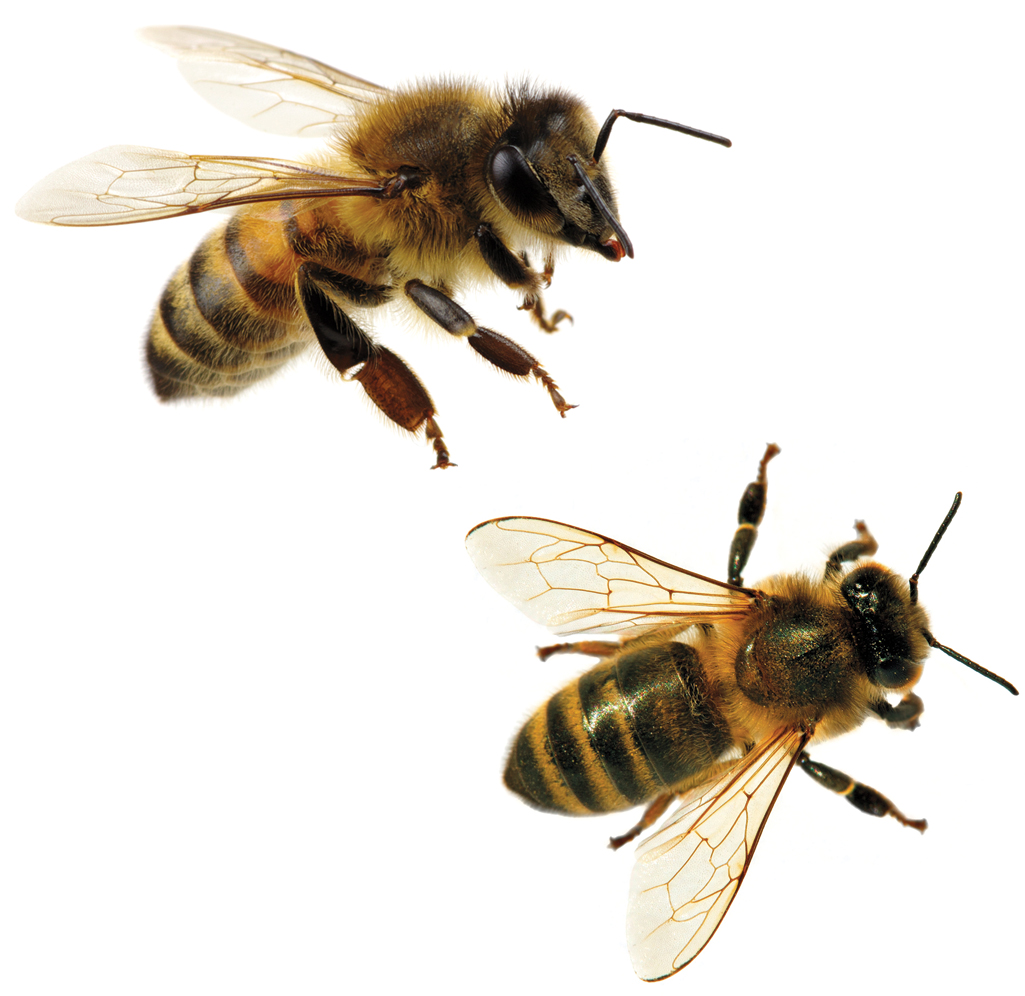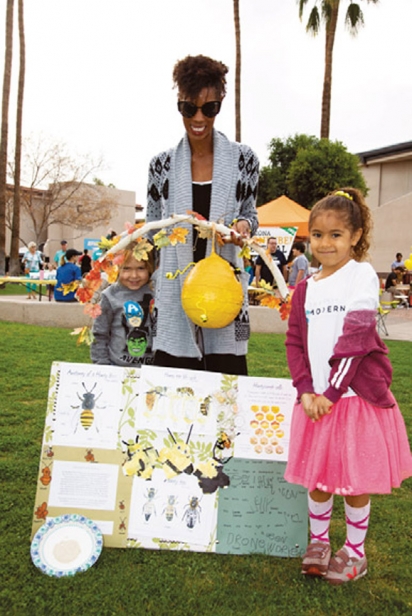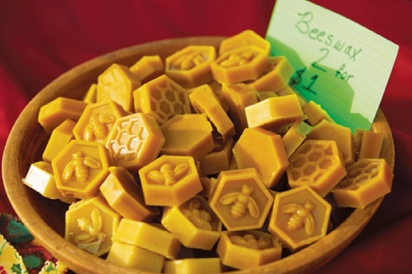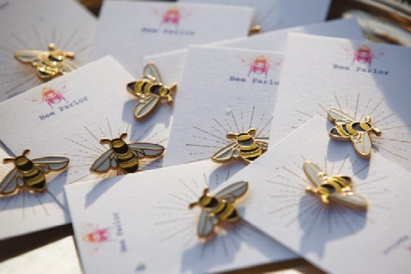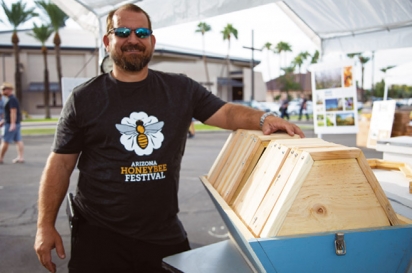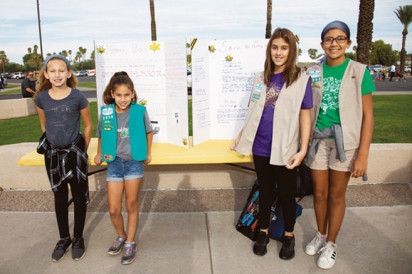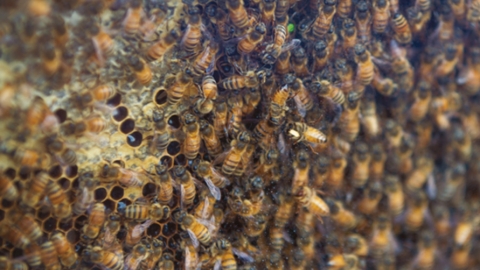Building the Buzz for Honeybees
The Arizona Honeybee Festival in Phoenix last November drew 7,000 people to celebrate and learn about the miracles wrought by honeybees. This is great news if you are a honeybee because it means you have a growing number of allies in your urgent struggle to survive. And it’s good news for humans too, because a bee crisis is a human crisis, and we all need to step up to avert it.
Bees not only provide delicious honey, they also pollinate and help propagate the plants and trees that we humans and other living beings depend on for food: 30% of the food people eat depends on pollinator species, especially honeybees. They are the champions among the pollinators, the ones who make agriculture possible.
Cricket Aldrich, a beekeeper and activist, started the Honeybee Festival in 2017. Her mission is to educate people about the importance of bees and beekeepers to our food system, to build community and support among beekeepers, to encourage more people to keep bees, and to promote best practices in contemporary management methods for honey producers.
The festival featured cooking demos and vendors, information tables, lectures and workshops by local experts and researchers, and posters presented by high school students. Workshops included introduction to beekeeping, planting for bees, seasonal beekeeping, how to capture a swarm, best management practices, and moving from backyard beekeeping to a business.
Participants were treated to tastings of pale amber single-origin and molasses dark multi-floral honeys from all parts of Arizona and from the far corners of the world. Local apiaries sold hives and equipment, honey and honeycomb, candles and other goods. Some vendors brought along frames where the live bees could be seen in action, busily tending to their work. These were a big hit with children who became fascinated by the activity of the bees, and the sweet honey they were able to sample.
Arizona State University graduate students and PhD researchers gave poster presentations about bee colony populations, their health, threats to their survival and what this means for their critical contributions to our own survival. The honeybee crisis has been unfolding since the turn of the century. Called Colony Collapse Disorder, it has spelled doom to many thousands of bee colonies in the Americas, Canada, Europe and other parts of the world. (See below).
According to Dr. Cahit Ozturk, professor at Arizona State University School of Life Sciences, Arizona had an average of 155,000 colonies in the 1970s. In 2018 there were 26,000, and in 2019 only 22,000.
In 2019, U.S. beekeepers reported a loss of 30–40% or more of their hives. In Arizona the numbers were as high as 64–74% because of the severe drought. Ozturk reported that beekeepers have managed to recuperate their losses by splitting the remaining hives and introducing new queens.
To education innovator and organics pioneer Rudolf Steiner and many beekeepers, there is a mystical quality to the nature of bees that summons a deep reverence. Dr. Patrick Pynes, a Flagstaff beekeeper, concurs with Steiner that the honeybee’s character is best understood through a combination of science and spirituality. He notes that the honeybee colony is a “whole being, a single, sentient, intelligent being.” Interestingly, he says each hive has its own scent, and the bees, likewise recognize the distinct scent of their keepers.
As Pynes said in his lecture, “The honeybee is fragile, but also resilient. It is not for us to ‘save the bees.’ Our role is to allow the bees to save themselves, by giving them a healthy environment in which to live.”
The good news is that home gardeners, farmers, city parks, hotels, golf courses and other businesses are catching on and joining the effort by using bee-friendly methods of weed and pest control, called Integrated Pest Management. By planting patches of flowering plants to attract bees, butterflies, bats, birds, beetles and flies they support the life cycle of the natural world, enabling plants to multiply, spread, bear fruit and flourish.
We can all do our part to help restore bee populations by:
• Planting flowers, trees and shrubs that offer bees food;
• Eliminating pesticide use (such as Roundup) in our yards and gardens;
• Providing a water supply for bees; and
• Creating a habitat to nurture and shelter wild bees and other pollinators.
It was heartening to see so many young people among the producers and festival participants. If youth can be inspired to understand the importance of honeybees then there is hope for the future of pollinators, the world of plants, animals and people.
Background on Colony Collapse Disorder
Alarms were sounded by beekeepers in Europe and the Americas in the early 2000s. They were finding that bees had inexplicably abandoned their hives. The brood was intact, honey was there, but the bees had vanished. This unprecedented behavior, mysterious and alarming, became known as Colony Collapse Disorder.
Colony loss in the United States has been increasing in frequency and magnitude in nearly every state over the past 16–20 years.
Experts now seem to agree that there is no single cause, but a combination of factors, mostly human induced, to account for colony collapse. Among them: loss of habitat and forage, poor nutrition, disease, pesticides, herbicides, weakened queens, drought and temperature changes that affect flowering time, and other effects related to climate change. Poor nutrition means a less vigorous queen, a smaller brood and smaller, weaker hives.
Other stress factors that contribute to bee decline include the now-common practice of hauling hives thousands of miles cross-country to pollinate industrial scale mono-crops, such as the almond groves in California. Because almond trees flower in February when the nectar flows and foraged food supplies are limited, honeybees are often fed sugar, or even high fructose corn syrup to support their activity. In a recent study, ASU’s Ozturk found that bees fed on refined sugars do not thrive as well as bees that feed themselves from a variety of natural floral sources.
75% of the crop species that provide 90% of the food worldwide depend upon pollination by honeybees. Considered from another perspective, most all flowering plants cannot survive without pollination by bees.
As author Michael Pollen says, “Bees are the legs of plants.” They enable otherwise immobile plants to cross-fertilize, keeping the genetics strong and adaptable. “It is a miraculous co-evolutionary relationship.”


